Join the College of Engineering on Husky Bites on Monday, 11/1 at 6 pm ET! They will be on zoom with Prof. Richelle Winkler and residents of the Sustainability House, Abbey Herndon & Kendra Lachcik. Tour the ever-evolving, zero-waste Sustainability Demonstration House on Husky Bites.
Alexis Pascaris, recent Environmental and Energy Policy MS graduate, was interviewed by PV Magazine on agrivoltaics as an alternative to large-scale solar. Read the article here.
Congrats to Hongmei Lu, recent EEP PhD graduate, on her new postdoc position with the Department of Human Geography and Spatial Planning at Utrecht University in the Netherlands. She is working on a European Research Council project on collaborative governance in urban planning.
Professor Emeritus Hugh Gorman’s book, “The Story of N: A Social History of the Nitrogen Cycle and the Challenge of Sustainability” was recommended by Five Books as one of the best books on the periodic table of elements.
John Arnold, PhD, Alumni of our Industrial Heritage and Archeology program ’17 is the new historical architect at the Keweenaw Historical National Park and was recently featured on Lake Superior Podcast. Learn more about John and his job preserving the buildings and industrial sites of the Keweenaw and promoting a better understanding of the area’s industrial heritage.
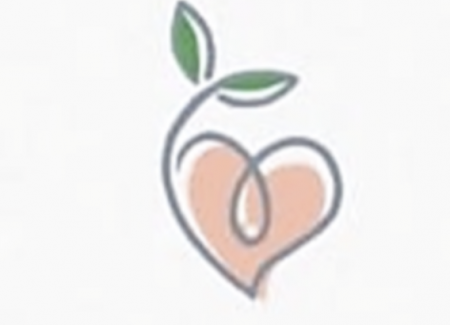
Introduction
My name is Savannah Obert-Pfeiffer and I am finishing up my second year at Michigan Tech as a Sustainability Science and Society major. I was interested in working with the Growing From The Heart project because I have seen first hand wasted garden goods. It is always heartbreaking to have to throw away, compost or toss to the animals all the produce that you’ve spent time to help grow. I also wanted to know more about the community of people in Houghton, finding people who are excited for the growing months and be able to grow a garden of my own this summer. It will be my first time in Houghton all year round and I am very excited for the growth to start.
Mission Statement and Last Year’s Report
Growing from the Heart is a grassroots initiative increasing access to fresh, local, and nourishing food grown by and for our friends and neighbors throughout the Western UP region. As we grow and redistribute food, we work together toward food sovereignty throughout our region. In 2020, the program reported sharing over 90.3 lbs of fresh produce. This included 21 different submitted reports of food sharing, 10 unique individuals have reported food sharing (20 people have signed up to be food sharers) and 3 unique pantries and to families/individuals. So far this year we have had feedback from 14 people in a pre-season interest form and 16 participants at two planning meetings.
Research Questions
For this second season of the program, I asked the following questions: How could Growing From the Heart work better in the future? How to structure drop-offs to be inclusive for community members? In what ways can community members work together to collectively supply more people with fresh food?
Findings/Recommendations
Most things were well received however more of the uncommon goods like swiss chard or squash, collard greens. Produce that a lot of people do not have experience with will turn them away; however, if little cards for ideas of how to cook or recipes went along with the produce more people would likely use it.
The pantries overall enjoyed the donations and considered having boxes or bins to store all of the donated produce. Some thought about people saving their extra boxes and using these when they drop-off fresh produce donations so that people coming to receive the pantry food could take home produce in a box. This way it could recycle the boxes, but also the idea of bins would work just as well to designate the drop-off spots.
There have also been a few meetings this spring to discuss the plans for the growing season of 2021. At these meetings there have been around 16 people each time, ranging all over the general area. Ironwood, Calumet, Lake Linden, Copper Harbor, Baraga, are a few examples; these are people that are students at Tech, graduates, faculty, and many community members not associated with Tech and crossing generations. The meetings are a diverse group of people that have a dedicated interest in growing food, which is all one can ask for.
What’s Next
As of April 2021, we are planning on having in-person meetings (wearing masks and socially distanced) over the growing season, to interact and exchange information or goods. There is a plan for a meeting in May to give compost out, make garden signs, and possibly swap plant starts. The goal is to incorporate everyone’s interests at some point. The details for the first meet-up in May are listed below:
- Saturday, May 15th from 1-3 pm at Chutes and Ladders Park. The group invites everyone to learn more about the program and to make “Growing from the Heart” garden signs. Supplies will be provided, though people are welcome to bring their own tools/scrap wood if they wish. A limited amount of compost will be available from the Sustainability Demonstration House for people to take home (please bring own containers).
Potential future meet-up ideas are listed below and dates will be scheduled soon:
- June Meet-up: Host a free school (people show up and share / teach each other about a subject) in the community 1x or 2x a month to engage with the community, for example seed stories, transplants, and connecting to trade things other than produce, fish, meat, dairy, grains.
- July Meet-up: Free workshops and getting together to preserve the food.
- August Meet-up: Seed saving tips and tricks, this way people can donate back into the Portage Lake Seed Library.
Savannah Obert-Pfeiffer will start her 3rd year as a Sustainability Science and Society major in Fall 2021. She completed work with the Growing from the Heart program as part of a Spring 2021 SS Undergraduate Program for Exploration and Research in Social Sciences under the supervision of Dr. Angie Carter (MTU Social Sciences).
by Maya Klanderman
The Portage Lake Seed Library is a new addition within the Portage Lake District Library in Houghton, MI this growing season. Seed libraries are grassroot initiatives focused on enriching the gardening community by encouraging seed saving and swapping. Novice or expert gardeners are provided with a low-risk way to try something new by using seed libraries. Using native, non GMO seeds, seed libraries provide free seeds to the public for gardening purposes.
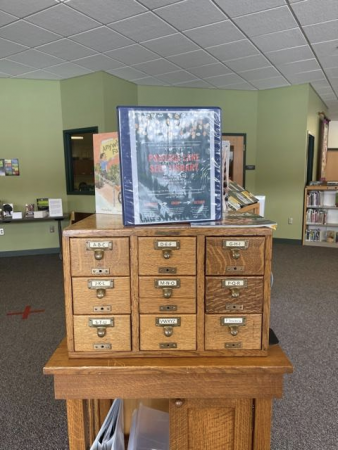
The seed library is situated near the new books section, towards the front of Portage Lake District Library. It is easily accessible and open to anyone who wants to check out seeds for the 2021 growing season.
The seed library hosts multiple varieties of seeds, including flowers. These seeds are from local growers and donations to the seed library. All of these seeds are suitable for growing in the Keweenaw.
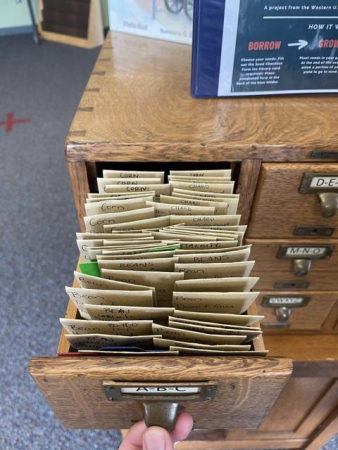
There is a binder situated on top of the seed library which holds documents needed to check out seeds as well as additional information about seed saving. Patrons can then take the seeds, plant them, harvest, and collect a portion of the seeds to donate back to the seed library in the fall. You do not need to be a member of the library to donate or check out seeds.
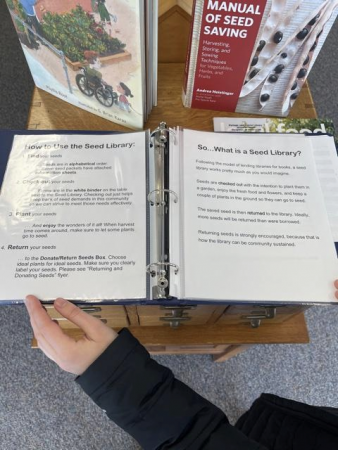
If you have any questions feel free to contact us at our email address PortageSeedLibrary@gmail.com.There will be more information available as the fall and winter season nears as to how seed donations will be accepted back to the seed library. Additional information and resources can be found on the Portage Lake District Library website. Happy seed saving!
Maya Klanderman will start her 2nd year as a Sustainability Science and Society major in Fall 2021. She completed work with the Portage Lake Seed Library as part of a Spring 2021 SS Undergraduate Program for Exploration and Research in Social Sciences under the supervision of Dr. Angie Carter and Rachael Pressley (Portage Lake Seed Library).
Dean Hemmer, Dean of The College of Sciences and Arts, said he was pleased to announce that Don Lafreniere has accepted the position of chair of Social Sciences.
“Leading a department housing so many different disciplines is a challenge and I am confident that Don is more than prepared for the task,” Hemmer said. “His extensive leadership experience, both inside and out of academia, together with his distinguished scholarly record, made him a clear choice for the position.”
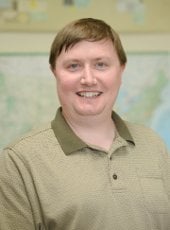
Lafreniere (la-fren-YAY), an associate professor of geography and GIS, also directs the Geospatial Research Facility and the Historical Environments Spatial Analytics Lab. He holds BS degrees in geography and history from Eastern Michigan University. He earned his Ph.D. in geography from the University of Western Ontario.
He took a unique route to Michigan Tech — his first career was working for Marriott and Princess Cruises managing hotels, lodges, and portfolios. Lafreniere, who has been at Tech since 2014, answered a few questions about himself and his plans for the department.
Why Michigan Tech? What brought you here?
Growing up in the Sun Parlour of Canada, in Windsor, Ontario, I also longed to live in the north. I had a chance to live in Alaska for a few years and wished to return to a northern climate when I was seeking out a faculty position.
But the size of the institution played a large part. Tech is large enough to be a genuine research institution but small enough to be a community. Communication is easy here. “If I need to reach someone in another department, or say, the provost, It’s not hard.”
The other major factor was that we really have a robust heritage community. When I first flew into CMX, the landing path took us over the dredge (Quincy Dredge No. 2 in Torch Lake). Seeing the dredge and the stamp mill behind it I thought: This is a living, robust landscape that I want to live and work in.
The department is unique. What Social Sciences is to us at MTU, would be eight different disciplines somewhere else. That creates truly interdisciplinary scholarship because of how freely we interact across disciplines. What we do here is special.
Because geography is the scientific study of space, and everything is somewhere, geographers can study anything. In my research, I help my colleagues and students think about the impacts of spatial relationships in a different way. My expertise is in GIS (geographic information science) and using historical information to learn how populations and places change through time and impact society today.
I love it when a student realizes, through mapping some data, that the societal issues they have heard about in the news or in another class can be visualized.
What do you like about teaching?
We have hardworking students who are innately curious. And as someone who is not teaching to majors (as we do not have a geography program at Tech), I can take the best of my discipline and apply it to situations in our students’ everyday lives in ways students can understand.
I love it when a student realizes, through mapping some data, that the societal issues they have heard about in the news or in another class can be visualized. An example would be a student exclaiming, “I had no idea that racial segregation is so bad in my hometown” It connects the theoretical ideas to their actual lives. And generally what follows is a flood of questions.
You mentioned that you want to work on the department’s branding message to potential students and parents. What will your goals be?
We do need to get across the unique nature of our programs. A big focus of our department is how we work with communities in our research and teaching. This creates a unique, applied social scientific, signature experience for our students that we need to market more to potential students.
You have four children and live in Boston Location. But we need to know: What’s with the giant antenna?
I do have a 100-foot radio tower in the yard. I’ve been an amateur radio operator since I was a teenager. I met my wife of 23 years, Erin, on the radio. [Editor’s note: Immediately before this interview, Lafreniere was talking about the pandemic over his radio with someone in Micronesia.]
The undergraduate committee of the Department of Social Sciences is pleased to announce the recipients of this year’s departmental awards. Thanks to all who nominated students and provided letters of support. Congratulations to this year’s winners:
Outstanding Senior: Tim Stone
The Department of Social Sciences Outstanding Senior Award recognizes outstanding undergraduate achievement in accomplishments in academics, research, leadership, and/or service.
Undergraduate Research: Alannah Woodring, Madelina Dilisi
The Undergraduate Thesis or Research Awards recognizes one Social Sciences graduating senior and one junior for their exemplary research, as evidenced in an undergraduate thesis, original research, or creative project under the guidance of department faculty members or other mentors. The awardees are recognized for research that is original and substantive given the standards of the discipline.
Community-Based Research: Kat Dvorak, Savannah Obert-Pfeiffer
The Community-Based Research Prize recognizes a Social Science student who is actively engaged in community-based research, a pillar of the department’s mission. The prize honor’s the student’s efforts to enhance community capacity, build relationships, and/or support community participation in research.
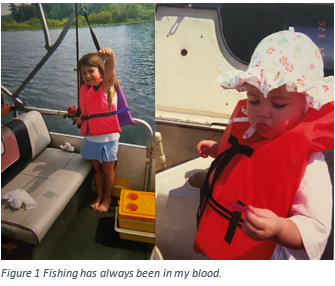
Savannah Obert-Pfeiffer is a soon-to-be third year student majoring in Sustainability Science and Society. The following blog was written as part of the Department of Social Sciences’ Undergraduate Program for Exploration and Research in Social Sciences (UPERSS) at Michigan Tech University.
What was your UPERSS project?
For my project I created a StoryMap website to represent a Social Sciences Department graduate student project titled, “Connections: Stories from Women Who Fish”.
Why did you use StoryMap rather than creating a “regular” website?
StoryMap is a platform that can be used in many different ways, including creating a web page designed around a specific map, it can be used like I did with more of a website but fun and interactive pieces, as well as making it a guided tour of the webpage. StoryMap is a good platform to use to portray information in a very personal way, rather than just scrolling through a one dimensional website StoryMap can take the reader with the creator on the journey of what the website has to offer. It is easy to work and play around to add fun experiences like moving text while the pictures stay until the next paragraph is ready. I would highly recommend StoryMaps because I have worked with many website platforms but nothing as creatively independent as StoryMap.
For the purpose of this particular project I used StoryMap to share background on the project, information about what Photovoice methodology is, and display women’s fishing stories and images (combined as “photostories”) in an interactive map showing some of these anglers fishing spots. I used the information that Erin Burkett (PhD, Environmental and Energy Policy, ‘19) had compiled for her graduate research and condensed it with the information she felt was most important to have on the website. Rather than focusing on women’s fishing participation rates or large-scale patterns among recreational anglers, I focused on sharing information produced by 15 women who participated in the photovoice project. The emphasis is on their unique experiences and perspectives. There were a lot of photos that anglers gave to Erin and I wanted to show off as many as possible while still keeping it interactive, which is why I made the map. For me this was the highlight of being creative with the website because it gave me the opportunity to see what I could create and I really enjoyed the process.
Why did you want to work on this project?
At a young age I would always go fishing with my mom and grandparents on their pontoon, as well as with my dad at our family friends’ pond. My life was highly influenced by these trips and as I got older I slowly stopped, which makes me sad. When I saw this project on the UPERSS project page I knew I wanted to do something, It had such a meaning to me that I honestly did not realize I missed it. This project was something that seemed like a really fun activity to do and I was right.
Also, it is exciting to think about having a website that can bring joy to people that were involved. Other people that saw the process of Erin’s project, even some of my friends, wanted to look at it because they were so impressed by the fish these women caught.
What was challenging?
I remember when I was starting out I was so scared of making something for someone that compiles a lot of what their graduate project contained. I was also very nervous to step out of my comfort zone with getting involved and meeting with her, but it was amazing in every way. I highly recommend any undergraduates that have the opportunity to start on a project that they feel passionate about, because if you are interested in the topic it makes discussing it that much easier. Also being proud of the end product helps to gain a strong support system, by growing better relationships with professors and others who can help out later in my career. A challenge I had with the actual process of the website was at one point the map I created would not show up anymore, so I had to recreate it. It is not hard work but it was frustrating to know that the part I spent the most time on was gone. A personal struggle I have was tracking my time, I found it somewhat like a stress reliever to work on after or before I finished my other homework, so I would just start working on it and 20 actions and changes on the site later I would realize I had no idea when I started. So, for anyone that is looking to do this type of project and needs to track hours put a text in at the top of the site so that when you start working on it you will see that note and just look at the time, then delete it before publishing.
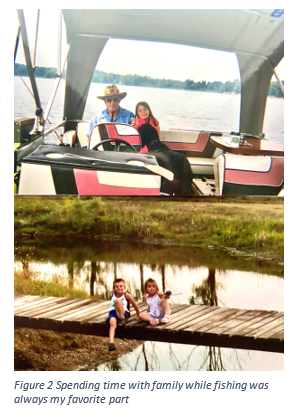
What did you learn through the course of this project (knowledge, skills, etc..)?
Some of the key points that I learned from this project are how to use story maps, I have never used this before so I had a lot of fun. I also learned about working with people and trying to collaborate, it was a very good learning curve.
How will you apply what you have learned in the future?
This process will definitely benefit me because of how I learned how maneuvering different platforms for creating content can be very beneficial, as well as knowing more people, and just getting my name on something that I can show people. I would highly recommend undergraduates to participate in UPERSS personally, I know I will be in the future so this was a fantastic starting point.